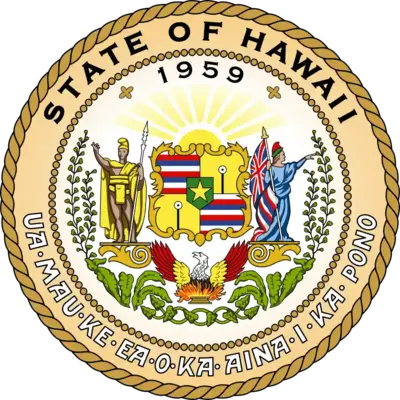Hawaii Quitclaim Deed Form
A Hawaii quitclaim deed is a legal document that transfers real estate ownership from one party to another without any guarantees about the title. Essentially, the person transferring the property, known as the grantor, simply says, “I’m not promising that this property has a clear title, but I’m giving you whatever interest I may have in it.”
This form of deed is commonly used among family members or close friends where there is a high level of confidence. It is also used to clear up title issues, transfer property to a spouse or an ex-spouse after a divorce, or place real estate into a trust. The simplicity of the quitclaim process is attractive because it involves less paperwork and fewer assurances compared to other types, like warranty deeds.
Build Your Document
Answer a few simple questions to make your document in minutes
Save and Print
Save progress and finish on any device, download and print anytime
Sign and Use
Your valid, lawyer-approved document is ready
Quitclaim Deed Laws and Requirements in Hawaii
Quitclaim deed procedures are governed by Title 28, Chapter 502 of the Hawaii Revised Statutes, which deals with the Bureau of Conveyances and its responsibilities in recording such documents.
Signing Requirements
According to Section 502-41 of the Hawaii Revised Statutes, every quitclaim deed must be signed in the presence of a notary public with the grantor(s) physically present.
Additional Forms to Submit
In addition to the quitclaim deed, several other documents are required during the filing process:
- Form P-64A (Conveyance Tax Certificate). This must accompany every deed filing unless an exemption under Section 247-3 applies to assess the appropriate conveyance tax.
- Form P-64B (Conveyance Tax Exemption). Should be filed alongside the deed if the transaction is exempt from conveyance taxes.
In addition, according to Section 508D-5, a Real Estate Disclosure Statement is required for residential properties. This form provides essential information about the property’s physical condition and history, which must be disclosed to potential buyers.
Filing Requirements
Quitclaim deeds in Hawaii must be recorded with the Bureau of Conveyances or Land Court to be legally effective and to update the public record. When submitted, the registrar must make a certified copy of the original document, complete with signatures, and then register it with a unique number. To determine the filing cost, you would need to consider the length of the document.
Format Requirements
Under Section 502-31 of the Hawaii Revised Statutes, the registrar can refuse any document larger than the standard size of 8.5 inches by 11 inches, including any attachments or schedules that exceed this size. The top three and one-half inches of the first page of the quitclaim deed must be reserved for recording information.
How to Fill Out and File a Quitclaim Deed in Hawaii
Completing and filing a quitclaim deed in Hawaii is simple, but accuracy is essential to validate the legal transfer of property rights.
Gather the Required Information
Start by collecting all necessary information about the property and the parties involved. You will need the full legal name and address of the grantee (the person receiving the title) and a complete legal description of the property.
Complete the Quitclaim Deed Form
Fill out the quitclaim deed form accurately. This includes entering the amount paid for the transfer (if applicable), the property address, and the Tax Map Key number. Ensure all fields are filled out clearly, and review the document for any errors or omissions to avoid issues during the recording process.
Ensure Proper Execution
The grantor must sign the quitclaim deed in the presence of a notary public to authenticate the identity of the signers. According to the notary acknowledgment section of the deed form, the grantor must appear personally before the notary and provide evidence of identity.
Notarize the Document
Once signed, the quitclaim deed requires notarization. The notary public will verify the grantor’s identity, witness the signature, and stamp and seal the deed, formally acknowledging it.
Record the Deed
Finally, file the notarized quitclaim deed with the appropriate local office, either the Hawaii Land Court or the Bureau of Conveyances. To complete the process, submit the required recording fees.

Looking for more Hawaii templates? We provide free forms and simple customization experience to anyone who wants having fewer to none difficulties when confronted with papers.